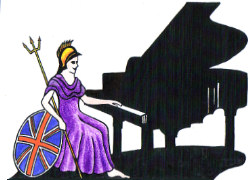Teachers, Accompanists and Piano Entertainers in the UK

UK Piano Page

Woodacre Farm
Warrington Road
Lymm, Cheshire WA139BT
England
As well as a large selection of New and
Canton Place
London Road
Bath, Bristol BA1 6AA
England
A large selection of carefully selected new and
152 Market Street
Dalton-in-Furness, Cumbria LA15 8RQ
England
40 Irongate
Derby, Derbyshire DE1 3GA
England
Charles Foulds opened the first Foulds shop in
53 High Street
Berkhamsted, Hertfordshire HP43QH
England
We know that when it comes to pianos, one size
Music Festival for performers and guests Our 10th
18-06-2022 01:30PM
The Morecambe Bay Piano Group was set up to extend
11-12-2021 02:00PM
The Morecambe Bay Piano Group was set up to extend
08-01-2022 02:00PM
The Morecambe Bay Piano Group was set up to extend
12-02-2022 02:00PM